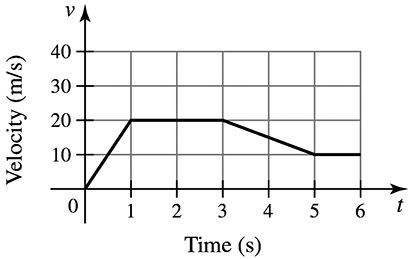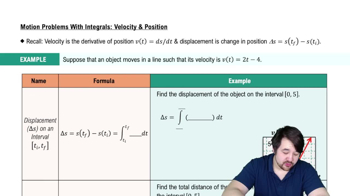Estimate the value of the definite integral using six subintervals and the left endpoint approximation. Which of the following best describes the process?
Table of contents
- 0. Functions7h 52m
- Introduction to Functions16m
- Piecewise Functions10m
- Properties of Functions9m
- Common Functions1h 8m
- Transformations5m
- Combining Functions27m
- Exponent rules32m
- Exponential Functions28m
- Logarithmic Functions24m
- Properties of Logarithms34m
- Exponential & Logarithmic Equations35m
- Introduction to Trigonometric Functions38m
- Graphs of Trigonometric Functions44m
- Trigonometric Identities47m
- Inverse Trigonometric Functions48m
- 1. Limits and Continuity2h 2m
- 2. Intro to Derivatives1h 33m
- 3. Techniques of Differentiation3h 18m
- 4. Applications of Derivatives2h 38m
- 5. Graphical Applications of Derivatives6h 2m
- 6. Derivatives of Inverse, Exponential, & Logarithmic Functions2h 37m
- 7. Antiderivatives & Indefinite Integrals1h 26m
- 8. Definite Integrals4h 44m
- 9. Graphical Applications of Integrals2h 27m
- 10. Physics Applications of Integrals 3h 16m
- 11. Integrals of Inverse, Exponential, & Logarithmic Functions2h 34m
- 12. Techniques of Integration7h 39m
- 13. Intro to Differential Equations2h 55m
- 14. Sequences & Series5h 36m
- 15. Power Series2h 19m
- 16. Parametric Equations & Polar Coordinates7h 58m
8. Definite Integrals
Estimating Area with Finite Sums
Problem 5.1.71b
Textbook Question
Displacement from a velocity graph Consider the velocity function for an object moving along a line (see figure).
(b) Use geometry to find the displacement of the object between t = 0 and t = 2.

 Verified step by step guidance
Verified step by step guidance1
Step 1: Understand the problem. The displacement of an object can be found by calculating the area under the velocity-time graph between t = 0 and t = 2 seconds. This is because displacement is the integral of velocity over time.
Step 2: Analyze the graph. Between t = 0 and t = 2 seconds, the velocity graph forms two geometric shapes: a triangle from t = 0 to t = 1 and a rectangle from t = 1 to t = 2.
Step 3: Calculate the area of the triangle. The triangle has a base of 1 second (from t = 0 to t = 1) and a height of 20 m/s (velocity at t = 1). Use the formula for the area of a triangle: A = (1/2) × base × height.
Step 4: Calculate the area of the rectangle. The rectangle spans from t = 1 to t = 2 seconds, with a width of 1 second and a constant height of 20 m/s. Use the formula for the area of a rectangle: A = width × height.
Step 5: Add the areas of the triangle and rectangle. The total displacement is the sum of these areas, which represents the total area under the velocity graph from t = 0 to t = 2 seconds.
 Verified video answer for a similar problem:
Verified video answer for a similar problem:This video solution was recommended by our tutors as helpful for the problem above
Video duration:
2mPlay a video:
Was this helpful?
Key Concepts
Here are the essential concepts you must grasp in order to answer the question correctly.
Velocity and Displacement
Velocity is the rate of change of displacement with respect to time, indicating how fast an object is moving in a specific direction. Displacement, on the other hand, is the overall change in position of the object, which can be calculated by integrating the velocity function over a given time interval. In this context, understanding the relationship between velocity and displacement is crucial for solving the problem.
Recommended video:

Using The Velocity Function
Area Under the Curve
In a velocity-time graph, the displacement of an object can be determined by calculating the area under the velocity curve between two time points. Each segment of the graph represents a different velocity, and the area can be computed using geometric shapes such as rectangles and triangles. This geometric approach simplifies the process of finding displacement without needing to perform calculus directly.
Recommended video:

Estimating the Area Under a Curve with Right Endpoints & Midpoint
Geometric Shapes in Graphs
When analyzing a velocity graph, different segments can form various geometric shapes, such as rectangles and triangles. The area of these shapes corresponds to the displacement during specific time intervals. For example, a rectangle's area is calculated as base times height, while a triangle's area is one-half base times height, allowing for straightforward calculations of displacement based on the graph's features.
Recommended video:

Graphing The Derivative

 7:59m
7:59mWatch next
Master Estimating the Area Under a Curve Using Left Endpoints with a bite sized video explanation from Patrick
Start learningRelated Videos
Related Practice
Multiple Choice
6
views
